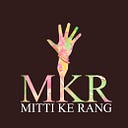LGBTQ in Indian Literature
Do you find only heterosexual characters in the books you read? Despite a long time, LGBTQ+ characters are not accepted in Indian literature frequently.
Shakuntala Devi was the first writer to talk about homosexuality in 1977 in her book “The World of Homosexuals” and from this book, the formal study about queers came into limelight. From then, many books came inclusive of the LGBTQ community where the protagonists are cast as homosexuals but still there is a long way to touch the bisexual community in LGBTQ which most of the authors fear of. Despite that, there are authors like Rainbow Rowell, David Levithan, Becky Albertalli, and Adam Silvera who have written many authentic books featuring LGBTQ as main leads in their books.
Not only books are being written and published, but they tend to be incorporated into people’s minds as well. For instance, John Green and David Levithan published a book, Will Grayson, in 2010, and is featured in The New York Times list and it became the first book to get featured on such a larger platform. In the same year, Julie Maroh published Blue is the Warmest Colour, a graphic novel which was awarded at the Cannes Film Festival.
When we come to the reluctance of the LGBTQ community, we have not lightened our minds yet. They as a section of the society face discrimination from going to the hospital for treatment to going to a Rashan shop to get essential commodities. Dignity to life is questioned at all points of time for them.
Indian literature still has to come a long way to depict them as frequently as heterosexuals though India has started accepting the LGBTQ community through movies and literature; people have started moving towards the light and understanding their rights and position in society as well. Even after section 377 being slashed, there is some fault from both sides. A bird who is set free after being in a cage for a long time, will not fly immediately. The same way, though the law has changed, still they haven’t come out of the closet because they aren’t accepted. when one like the color blue and the other red, doesn’t mean it’s not natural, the same way when an individual feels different or likes different it doesn’t mean that they are wrong, it only means they are different. Only when there is acceptance of this difference and equality given to all irrespective of the difference change can be attained
Contributed by Harshita Garg, content writer at Mitti Ke Rang
At Mitti Ke Rang, we started with a COVID-19 community support fundraising, as an emergency response to provide a safety net to families. This will help them survive in the lockdown period. We aim to directly support these families by providing a minimum wage, through transferring the same into their accounts or partner with local NGO, Organisation, Fellow, or a Volunteer, and support them with groceries.
You can donate at:
Our Social Media:
LinkedIn — https://www.linkedin.com/in/mitti-ke-rang-mkr-81b230120/
Twitter: https://twitter.com/mitikerang?s=08
Instagram: https://www.instagram.com/mitti_ke_rang?r=nametag
Facebook: https://www.facebook.com/Mitikerang/
YouTube:
